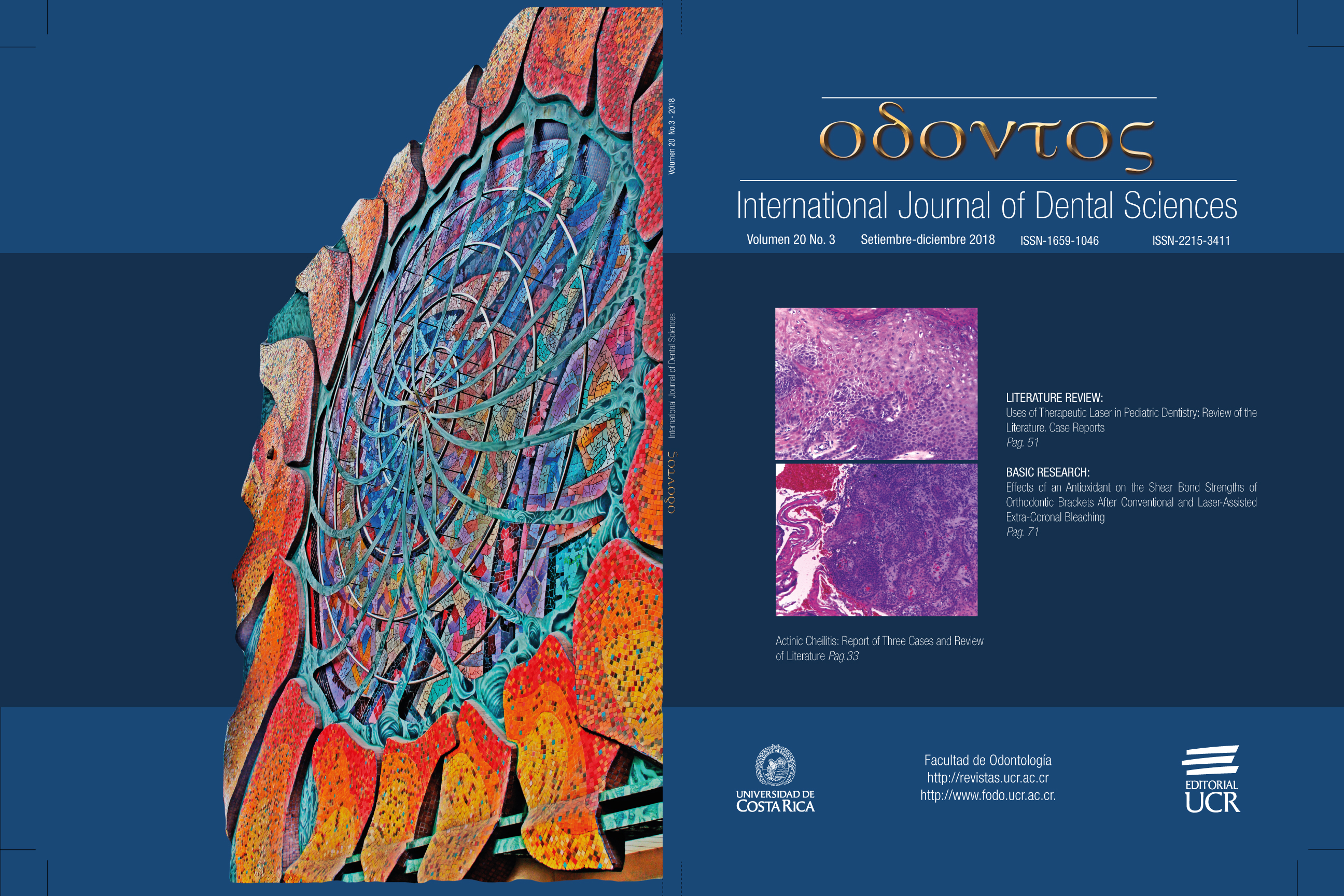Resumen
Fanconi Anemia (FA) is an autosomal-recessive genetic disease that is linked to Chromosome X, which is reported in studies with pancytopenia, congenital malformations, and a predisposition to develop cancer. FA 1,360,000 births, and is a condition that occurs in heterozygous subjects in 0.5% of the population. In Mexico, there are, to our knowledge, no epidemiological data on FA, and it is thought that many cases are underdiagnosed. This document reports the clinical case of a patient diagnosed with FA who the cardinal signs of this rare pathology. The pediatric approach involved was performed with a preventive and restorative approach, in addition to the design and placement of a palatal shutter. After a follow-up of more than 12 months, a significant reduction in the recurrence of infections, such as otitis, tonsillitis, and pharyngitis, was observed, suggesting a positive influence of the use of the obturator. In turn with the latter, there was a lower need for transfusions, which may also be related to control of the foci of the infection. The pediatric approach employed in to patients with FA may have significant repercussions on both quality of life and on their patients’ general systemic condition, although this is scarcely verifiable due to the rarity of this pathology.
Citas
Dufour C. How I manage patients with Fanconi anaemia. Br J Haematol 2017; 178 (1): 32-47.
D’agulham D., Chaiben L., Lima A., Torres-Pereira C., Machado M. Fanconi anemia: main oral manifestations. RGO, Rev Gaúch Odontol 2014; 62 (3): 281-288.
Wassenhov L., Mochly-Rosen D., Weinberg K. Aldehyde dehydrogenase 2 in aplastic anemia Fanconi anemia and hematopoietic stem cells. Mol Genet Metab 2016; 119 (1): 28-36.
Kutler D., Auerbach A. Fanconi anemia in Ashkenazi Jews. Fam Cancer 2014; 3 (3-4): 241-248.
Tipping A., Pearson T., Morgan N., Gibson R., Kuyt L., Havenga C., Gluckman E., Joenje H., de Ravel T., Jansen S., Mathew C. Molecular and genealogical evidence for a founder effect in Fanconi anemia families of the Afrikaner population of South Africa. Proc Natl Acad Sci U S A 2001; 98 (10): 5734-5739.
Salem A., El-Bassyouni H., El-Kamah G., Zarouk W., Eid M., Mosaad R., Sayed A., Temtamy S. Screening for common mutations in four FANCA gene exons in Egyptian Fanconi anemia patients. Genes Dis 2014; 3 (1): 24-30.
Callén E., Casado J., Tischkowitz M., Bueren J., Creus A., Marcos R., Dasí A., Estella J., Muñoz A., Ortega J., de Winter J., Joenje H., Schindler D., Hanenberg H., Hodgson S., Mathew C., Surrallés J. A common founder mutation in FANCA underlies the world’s highest prevalence of Fanconi anemia in Gypsy families from Spain. Blood 2005; 5 (105): 1946-1949.
Cavalcanti L., Araújo R., Bonfim C., Torres-Pereira C. Oral manifestations compatible with chronic graft-versus-host disease in patients with Fanconi anemia Biol Blood Marrow Transplant 2015; 21 (2): 275-280.
Masserot C., Peffault R., Rocha V., Leblanc T., Rigolet A., Pascal F., Socié G. Head and neck squamous cell carcinoma in 13 patients with Fanconi anemia after hematopoietic stem cell transplantation. Cancer 2008; 113 (12): 3315-3322.
Goswami M., Bhushan U., Goswami M. Dental perspective of rare disease of Fanconi anemia: case report with review. Clin Med Insights Case Rep 2016; 9: 25-30.
Lyko K., Lemes A. L., Bonfim C., Torres-Pereira C. C., Amenábar J. M. Oral health status in children and adolescents with Fanconi anemia. Spec Care Dentist 2016; 36 (2): 71-74.
Engel J. D., Ruskin J. D., Tu H. K. Hematologic management of a patient with Fanconi’s anemia undergoing bone grafting and implant surgery. J Oral Maxillofac Surg 1992; 50 (3): 288-292.

